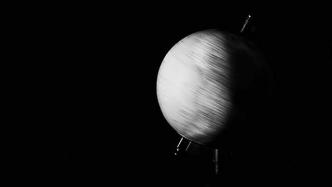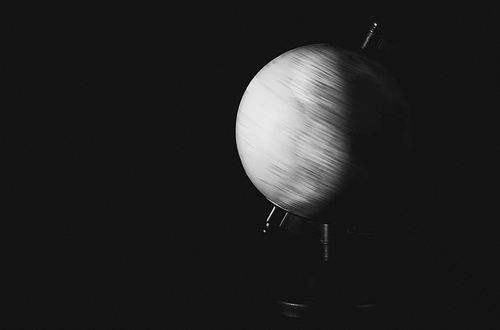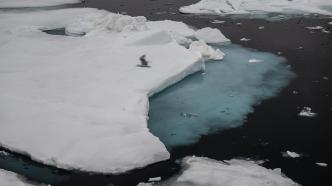

Scientists have discovered that a large part of the polar drift turns out to be caused by human activities, such as pumping groundwater for drinking and irrigation. Credit: ALEXSAVA/ISTOCK
Have you ever used a globe? With just a flick of the finger, the "Earth" spins around a tilted axis, and that axis represents the Earth's axis.
When the real earth rotates on its axis, it will wobble slightly as it spins, like a top. The sloshing molten iron in the earth's core, the melting ice on the earth's surface, the resulting ocean currents and even hurricanes will all cause "polar drift". Now, scientists have found that a large part of the polar drift is actually caused by human activities, such as pumping groundwater for drinking and irrigation. Related research was published in Geophysical Research Letters on June 15.
Like spinning a basketball on your fingertips, when the ball is balanced, it spins evenly along its axis. But if you add or lose weight to one part of the ball, it becomes unbalanced, wiggling and changing its axis of rotation during spin. The same is true for the earth, and the earth's axis will also wobble, causing the annual wobble of the north pole to draw a circle about 10 meters in diameter. The wobble's center drifts long-term, and it's currently tilting about 9 centimeters per year toward Iceland.
Clark Wilson, a geophysicist at the University of Texas at Austin, and colleagues believe that the annual consumption of tens of billions of tons of groundwater may affect drift, but it cannot be the only factor, so they developed a model of polar drift. The model, which first considered factors such as new dams and melting ice sheets, found that dam and ice changes did not match observed polar motion.
When the researchers added hydrological models related to the 215 billion tons of groundwater withdrawn between 1993 and 2010 to the polar drift model, the latter predicted polar motions that matched the observed results so far.
Therefore, Wilson and others concluded that during the above-mentioned period, the redistribution of water weight caused the earth's poles to move by nearly 80 cm. Depletion of groundwater extraction appears to play a larger role in polar drift than glacial meltwater in Greenland or Antarctica.
The study shows that the impact of groundwater extraction is amplified because much of this water is located in northern hemisphere mid-latitude groundwater depletion hotspots such as northwestern India and the western United States. If the greatest groundwater loss occurred near the equator or the poles, the impact would be much smaller, Wilson noted.
Still, the wobble is too small to affect weather or seasons, but the findings could help scientists use polar drift to measure other phenomena, Wilson said.
Lead author Ki-Weon Seo, a geophysicist at Seoul National University in South Korea, said the study provides a way to quantify the extent to which groundwater pumping is causing sea level rise. Their study estimated that groundwater depletion raised global sea levels by about 6 millimeters between 1993 and 2010, matching estimates from other studies.
Since detailed astronomical measurements of the position of the Earth's axis date back to the late 19th century, polar drift could help Seo track human impact on Earth's water over the past century.
Related paper information:
https://doi.org/10.1029/2023GL103509
